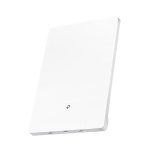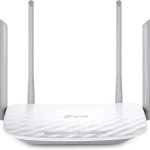If your WiFi feels sluggish and frustrating, don’t worry—there are simple steps to boost your speed quickly. First, restart your router to clear any temporary glitches, then check for firmware updates and consider repositioning your device for better coverage. Reducing interference from other electronics or limiting connected devices can also make a significant difference.
A quick fix involves rebooting your router, updating its firmware, and optimizing its placement to improve signal strength. Making these small adjustments can often restore your WiFi to its optimal speed without needing technical expertise.
If your WiFi router is running slowly, it can be incredibly frustrating—especially when you’re in the middle of an important video call or streaming session. Slow internet speeds can stem from various factors like outdated hardware, interference, or too many devices connected at once. The good news is that fixing this doesn’t have to be complicated. By taking a few quick steps—such as restarting your router, ensuring it has the latest updates, and positioning it strategically—you can dramatically boost your WiFi speed and enjoy seamless browsing once again.
How to Fix Wifi Router Slow Speed: The Complete Guide
Identify the Cause of Slow Wifi Speed
Understanding why your wifi is slow is the first step to fixing it. Common causes include interference from other devices, outdated equipment, or problems with your internet plan. Conducting a speed test helps determine if your connection is below what you expect from your plan. If your speed is much lower, it’s time to troubleshoot further.
Test Your Internet Speed
Use tools like Speedtest.net or Fast.com to check your current download and upload speeds. Run tests at different times of the day to see if the speed varies a lot. This helps identify if the issue is temporary or persistent. Record the results to compare after troubleshooting your router.
Reboot Your Router
A simple restart can fix many wifi speed issues. Turn off your router, wait for at least 30 seconds, and then turn it back on. This clears temporary glitches and refreshes your connection. Try testing your speed again after rebooting to see if there’s any improvement.
Check for Firmware Updates
Router manufacturers regularly release firmware updates to fix bugs and improve performance. Log into your router’s admin panel and check for updates. Installing the latest firmware can often solve speed problems caused by known issues.
Optimize Router Placement
Where your router sits can significantly impact wifi speed. Place it in a central location, away from thick walls, metal objects, and electronic devices that cause interference. Elevate the router to a higher position for better signal distribution across your home.
Avoid Common Interference Sources
WiFi signals can be disrupted by microwave ovens, cordless phones, baby monitors, and Bluetooth devices. Keep your router away from these sources to maintain a strong, fast signal. Also, minimize the number of devices connected simultaneously.
Change Wifi Channel and Band
Wireless networks operate on different channels. Overlapping channels can cause congestion, slowing down your wifi. Access your router settings and switch to a less crowded channel. If your router supports dual-band, switch to the 5 GHz band for faster speeds and less interference.
How to Switch Wifi Channels
Log into your router’s admin interface, typically through a web browser. Locate the wireless settings and select a channel that is less used in your area. Use apps like WiFi Analyzer to find the best channel for your network.
Enable Quality of Service (QoS)
QoS settings prioritize your most important devices or activities, such as streaming or gaming. Enabling QoS ensures that your high-priority traffic gets the bandwidth it needs, leading to faster speeds for critical tasks.
Limit Connected Devices
Too many devices using your wifi at once can slow down your network. Disconnect devices that are not in use and consider upgrading your internet plan if you have many users in your home or office.
Manage Device Traffic
Use your router’s device management feature to see which devices are consuming the most bandwidth. Limit or schedule their usage to improve overall wifi speed.
Upgrade Your Equipment
Older routers may not support the latest wifi standards or provide fast speeds. Consider upgrading to a newer model with features like dual-band wifi, beamforming, and higher data rates to boost your wifi performance.
Choosing the Right Router
Look for routers that support at least wifi 5 (802.11ac) or wifi 6 (802.11ax). These standards provide faster speeds and better handling of multiple devices. Check reviews and specifications to find the best fit for your needs.
Secure Your Wifi Network
An open or poorly secured network can be accessed by neighbors or intruders, which slows down your connection. Use strong WPA3 or WPA2 passwords, disable WPS, and regularly update your security settings.
Perform Regular Maintenance
Cleaning up your network can prevent slowdowns over time. Restart your router periodically, check for firmware updates, and remove unused devices from your network. This keeps your wifi running smoothly.
Check for External Issues
Sometimes the problem is outside your home. Contact your internet service provider (ISP) to see if there are outages or maintenance work in your area. They can also assist with line issues or upgrade options.
Consider Upgrading Your Internet Plan
If your current plan offers low speeds, upgrading to a higher bandwidth package can improve your wifi experience. Evaluate your internet usage needs and discuss available options with your ISP.
Use Ethernet Cables for Critical Devices
Wired connections are more stable and faster than wifi. Connect important devices directly to your router using Ethernet cables to ensure they get the best possible internet speed and reduce wifi congestion.
Advanced Troubleshooting Tips
For persistent speed issues, consider resetting your router to factory settings. This erases custom configurations that may cause conflicts. Also, check for firmware updates or consult technical support if needed.
Summary of Key Fixes for Wifi Speed
- Reboot your router regularly
- Update firmware and software
- Optimize placement and reduce interference
- Switch to 5 GHz band and change channels
- Limit devices and prioritize traffic with QoS
- Upgrade to modern routers supporting wifi 6
- Secure your network properly
- Upgrade your internet plan if necessary
Additional Tips for a Faster Wifi
Consider using wifi extenders or mesh networks if your home is large or has many dead zones. These expand coverage and improve signal strength everywhere. Also, regularly check for device firmware updates for your smart gadgets.
Speeding up your wifi connection involves a mix of simple steps and technical upgrades. Start with basic fixes like placement and rebooting, then move on to upgrading equipment or your plan if needed. By following these strategies, you can enjoy faster, more reliable internet at home or in the office.
FIX your slow internet speed – the Ultimate WiFi troubleshooting guide!
Frequently Asked Questions
What steps can I take to improve my Wi-Fi signal strength throughout my home?
To enhance your Wi-Fi signal, reposition your router to a central location away from thick walls and electrical devices that may cause interference. Elevate the router off the floor, ideally on a shelf or high furniture, to allow better signal distribution. Reducing obstacles and placing the router in an open space helps ensure stronger and more consistent coverage across all areas of your home.
How can updating my router’s firmware impact my Wi-Fi speed?
Regularly updating your router’s firmware improves its performance and stability by fixing bugs and optimizing functionality. Manufacturers often release firmware updates that enhance signal handling, security, and compatibility with new devices. Access your router’s admin panel and check for available updates periodically to ensure your device runs efficiently, potentially boosting your Wi-Fi speeds.
What settings should I adjust on my router to improve bandwidth and speed?
Optimizing your router’s settings involves selecting the best Wi-Fi channel to minimize interference, especially in crowded areas. Switching from the 2.4 GHz band to the 5 GHz band can provide faster speeds and less congestion. Additionally, enabling Quality of Service (QoS) settings helps prioritize bandwidth for essential devices and applications, leading to a smoother internet experience.
What role does device placement play in Wi-Fi performance, and how can I optimize it?
Device placement is crucial because obstacles like walls, furniture, and appliances can weaken Wi-Fi signals. Keep devices within a reasonable distance from the router and avoid placing them behind metal objects or inside enclosed spaces. Using Wi-Fi extenders or mesh systems can also help distribute the signal more evenly, especially in larger homes.
How can I identify and reduce sources of Wi-Fi interference in my environment?
Identify electronic devices such as cordless phones, microwave ovens, or Bluetooth gadgets that operate on similar frequencies and may cause interference. Keep your router away from these devices for clearer signal transmission. Changing your Wi-Fi channel to one with less traffic and avoiding crowded bandwidths also helps reduce interference issues, resulting in faster and more stable connections.
Final Thoughts
To fix wifi router slow speed, start by relocating your router to a central, open area to reduce interference. Update your router’s firmware regularly to ensure optimal performance. Additionally, limit the number of connected devices and change the Wi-Fi channel if you experience congestion.
Regularly restarting your router can also boost speed and connection stability. Removing unnecessary devices and repositioning the router helps improve signal strength.
In conclusion, understanding how to fix wifi router slow speed involves simple steps like optimizing placement, updating firmware, and managing device connections. Implementing these strategies ensures a faster, more reliable internet experience.




